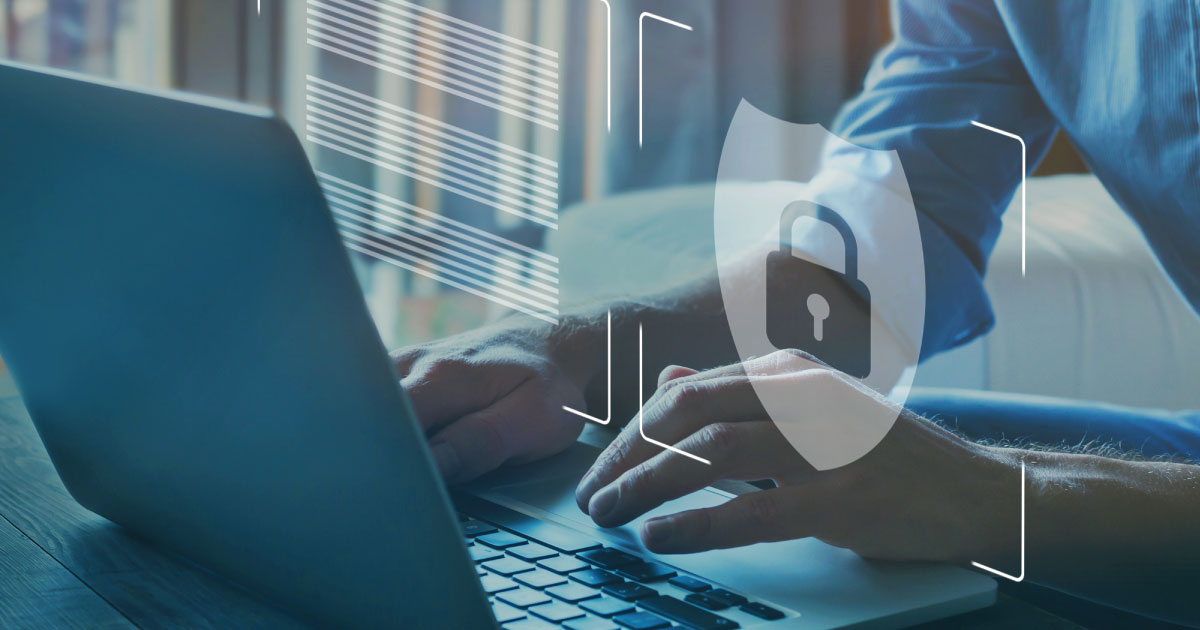C-Suite and Cybersecurity: How Cybersecurity Integration Can Help
In today's hyper-connected digital landscape, the significance of cybersecurity cannot be overstated. The modern business world is overflowing with data, and with this abundance comes an ever-increasing risk of cyber threats and breaches. Recent history serves as a blunt reminder of the grave consequences faced by organizations that fail to prioritize cybersecurity. From high-profile data breaches to crippling ransomware attacks, businesses across sectors have found themselves in the crosshairs of determined cyber adversaries.
It is against this backdrop of escalating cyber threats that this guide presents a central opinion: The integration of cybersecurity into the C-suite is no longer a choice but a necessity for comprehensive security. Traditionally relegated to the IT department, cybersecurity is now a strategic business imperative that must fill every facet of an organization. Managed IT services and solutions from innov8 have a pivotal role to play in this paradigm shift, helping companies fortify their defences, monitor threats, and respond effectively to incidents.
This article will delve into the evolving cybersecurity landscape, underscoring the urgency of recognizing cybersecurity as a core business concern. You will explore recent high-profile breaches, dissect the role of the C-suite in cybersecurity, and examine the benefits of integrating cybersecurity into executive decision-making. As you embark on this journey, the message is clear: Cybersecurity is not just an IT problem—it's a boardroom concern that demands immediate attention.
The Changing Face of Cybersecurity Threats
The cybersecurity landscape is in a perpetual state of flux, evolving to meet the ever-changing tactics of cybercriminals. In recent years, the world has witnessed a significant shift in the nature of cybersecurity threats. Cyber adversaries are becoming increasingly sophisticated, exploiting new attack vectors that extend beyond traditional malware and phishing.
One notable trend is the rise of ransomware attacks, where cybercriminals encrypt an organization's critical data and demand a ransom for its release. These attacks have wreaked havoc across industries, disrupting operations and causing substantial financial losses. Additionally, the dark web has provided cybercriminals with a thriving marketplace for stolen data, making it easier for them to monetize their illicit activities.
The Costly Fallout of Cybersecurity Breaches
The financial and reputational consequences of cybersecurity breaches are staggering. Beyond the immediate financial losses associated with ransom payments or data recovery, organizations must contend with long-term financial burdens. Managed IT services play a key role in minimizing these costs by implementing robust cybersecurity measures and incident response plans.
The damage isn't solely monetary; reputational harm is often the more enduring consequence. A data breach can affect customer trust, leading to customer attrition and a tarnished brand image. Businesses may find themselves grappling with legal liabilities, regulatory fines, and costly legal battles. The Ponemon Institute's annual Cost of a Data Breach report consistently highlights the severe financial implications of data breaches. According to the institute’s report in conjunction with IBM, the data breach cost, on average, has reached a record high of USD4.45 million as of 2023, a 2% increase from last year.
The Imperative of Proactive Cybersecurity
Given the rapidly evolving threat landscape and the potentially devastating repercussions of breaches, a proactive approach to cybersecurity is no longer optional but vital. Managed IT services and solutions offer a proactive defence against emerging threats. This approach involves continuous monitoring, threat detection, and swift incident response to minimize damage. Additionally, organizations must prioritize employee cybersecurity training to foster a vigilant workforce capable of recognizing and thwarting threats.
Recommended Read: How Outsourcing IT Can Save Your Business Money

The C-Suite and Organizational Leadership
The C-suite, or executive suite, encompasses the highest-ranking executives in an organization, typically including the Chief Financial Officer (CFO), Chief Information Officer (CIO), Chief Executive Officer (CEO), Chief Operating Officer (COO), and Chief Marketing Officer (CMO), among others. These executives are responsible for making key strategic decisions, shaping the organization's direction, and ensuring its overall success.
Traditional View: Cybersecurity as an IT Concern
Traditionally, cybersecurity was viewed primarily as an IT concern within organizations. The C-suite often considered it a technical issue relegated to the IT department's domain. In this limited perspective, cybersecurity was seen as a matter of implementing antivirus software, firewalls, and network security measures. While important, this approach failed to recognize the broader implications of cybersecurity on the organization's well-being.
The Shift: Recognizing Cybersecurity as Strategic
In recent years, there has been a significant shift in the way the C-suite perceives cybersecurity. This transformation has been driven by the escalating frequency and sophistication of cyber threats, as well as the realization that cybersecurity is not merely a technical matter but a strategic business issue.
Today, the C-suite increasingly recognizes that cybersecurity is intertwined with the organization's reputation, financial stability, and legal compliance. Data breaches and cyberattacks can lead to substantial financial losses, regulatory fines, and severe reputational damage. As a result, executives at the highest levels have come to understand that they must actively engage in cybersecurity discussions and decisions.
Finally, the C-suite's role in cybersecurity extends beyond risk mitigation. It involves setting the organization's cybersecurity strategy, ensuring alignment with business objectives, and fostering a culture of security awareness throughout the organization. The CISO (Chief Information Security Officer) or equivalent plays a critical role as a liaison between the C-suite and the IT department, translating technical complexities into strategic insights.

Benefits of Cybersecurity Integration
Integrating cybersecurity into the C-suite offers numerous advantages, including improved threat awareness, regulatory compliance, customer trust, asset protection, and potential cost savings in insurance premiums. Let’s explore each of them.
Improved Threat Awareness and Response
When cybersecurity is integrated into the C-suite, organizations benefit from heightened threat awareness and more effective response strategies. Executives at the highest level are better positioned to understand the evolving threat landscape and allocate resources strategically to mitigate risks. For instance, by investing in managed IT solutions such as advanced threat detection and incident response services, organizations can proactively identify and address potential threats before they escalate.
Enhanced Regulatory Compliance
The integration of cybersecurity into the C-suite ensures that organizations stay ahead of evolving regulatory requirements. With the increasing emphasis on data protection laws such as GDPR and CCPA, compliance has become a complex and critical aspect of business operations. Managed IT solutions can assist in maintaining compliance by implementing necessary safeguards and ensuring data privacy.
Safeguarding of Customer Trust and Data
In today's data-driven world, customer trust has become more essential. Organizations that prioritize cybersecurity instill confidence in their customers. By protecting sensitive customer data, organizations demonstrate their commitment to privacy and security. For example, healthcare providers that integrate cybersecurity into their leadership teams build trust by safeguarding patient health records, ultimately leading to better patient outcomes and loyalty.
Protection of Intellectual Property and Assets
Intellectual property (IP) is a valuable asset for many organizations. Whether it's trade secrets, proprietary technology, or innovative designs, IP needs protection. Cybersecurity integration helps safeguard these assets from theft or espionage. Organizations like tech giants IBM and Microsoft have successfully integrated cybersecurity into their C-suites, actively protecting their IP portfolios and ensuring their innovations remain confidential.
Reduction of Cybersecurity Insurance Premiums
A proactive approach to cybersecurity can lead to significant reductions in cybersecurity insurance premiums. Insurers favour organizations that demonstrate a commitment to risk reduction. For example, a financial institution that integrates cybersecurity into its leadership and invests in comprehensive managed IT security solutions may negotiate lower premiums due to reduced perceived risk.

Challenges and Barriers
Integrating cybersecurity into the C-suite is not without its challenges, but these hurdles can be overcome with strategic approaches. Let’s look at some of these challenges:
Lack of Cybersecurity Expertise among Top Executives
One of the most common challenges organizations encounter when integrating cybersecurity into the C-suite is the limited cybersecurity expertise among top executives. While C-suite leaders possess extensive business acumen, they may lack in-depth knowledge of cybersecurity threats and strategies.
Budget Constraints
Another significant hurdle is budget constraints. Allocating resources to cybersecurity initiatives can be a tough sell, especially when there is a perception that cybersecurity is primarily an IT cost. Organizations may find it challenging to secure the necessary funds for robust cybersecurity measures.
Resistance to Change
Resistance to change is a prevalent barrier when trying to integrate cybersecurity into the C-suite. Executives and employees may resist adopting new practices or technologies, believing that they disrupt established routines or workflows. Resistance can hinder the implementation of necessary cybersecurity measures.
Information Silos within the Organization
Information silos—where different departments or teams do not communicate effectively—can impede cybersecurity efforts. When cybersecurity responsibilities are fragmented and not shared across the organization, it becomes challenging to coordinate a cohesive strategy.
Strategies to Overcome These Challenges
Executive Education: Address the lack of cybersecurity expertise among top executives by providing cybersecurity education and training. This can be in the form of workshops, seminars, or online courses tailored to the C-suite's needs.
Budget Justification: Clearly articulate the potential costs of cybersecurity breaches, regulatory fines, and reputational damage. Present a business case for cybersecurity investments by demonstrating how they align with the organization's strategic goals and can mitigate financial risks.
Change Management: Implement robust change management practices to ease the transition toward a cybersecurity-integrated C-suite. Engage employees at all levels, communicate the benefits of cybersecurity integration, and involve key stakeholders in decision-making.
Cross-Functional Teams: Break down information silos by establishing cross-functional cybersecurity teams that include representatives from various departments. Encourage open communication and collaboration to develop a comprehensive cybersecurity strategy.
Cybersecurity Champions: Appoint cybersecurity champions within the C-suite—executives who champion cybersecurity initiatives and drive the culture of security within the organization. These champions can help bridge the gap between technical experts and non-technical leaders.
Regular Assessments: Conduct regular cybersecurity assessments and audits to identify vulnerabilities and measure the effectiveness of cybersecurity measures. Share these findings with the C-suite to underscore the ongoing need for vigilance.

Fostering a Culture of Cybersecurity Awareness
Building a culture of cybersecurity awareness within an organization is not just a checkbox; it's a fundamental pillar of a strong cybersecurity strategy. Such a culture extends beyond the IT department, involving every employee at all levels. The importance of this cultural shift cannot be overstated, as it empowers the entire workforce to become vigilant defenders against cyber threats.
Why It Matters
Human Element: Many cybersecurity breaches occur due to human error or negligence. An aware and educated workforce serves as a critical line of defence against these vulnerabilities.
Early Detection: A culture of cybersecurity awareness encourages employees to recognize and report suspicious activities promptly. Early detection can mitigate potential breaches.
Compliance: Regulatory requirements often necessitate cybersecurity training and awareness programs. Building a culture of cybersecurity ensures compliance with these standards.
Reputation and Trust: Customers and partners trust organizations that take cybersecurity seriously. A cybersecurity-aware culture enhances an organization's reputation.
Tips for Educating Employees
Cybersecurity Training: Conduct regular cybersecurity training sessions for all employees, covering topics like phishing, password management, and safe online behaviour. Innov8's managed IT solutions can provide comprehensive training modules.
Simulated Phishing Exercises: Periodically simulate phishing attacks to test employees' ability to identify and respond to phishing emails. Use the results to tailor training efforts.
Clear Policies: Establish and communicate clear cybersecurity policies and procedures. Ensure that all employees understand their roles and responsibilities in maintaining security.
Reporting Mechanisms: Implement a straightforward mechanism for employees to report security incidents or concerns anonymously if preferred. Encourage a culture of "see something, say something."
Regular Updates: Keep employees informed about the latest cybersecurity threats and trends. Share news of recent breaches and their consequences to highlight the real-world impact of security lapses.
Reward Vigilance: Recognize and reward employees who actively contribute to the organization's cybersecurity efforts. Acknowledgment can foster a sense of collective responsibility.
Transform Your Organization's Cybersecurity Culture with innov8's Managed IT Solutions
innov8 specializes in managed IT solutions designed to fortify your organization's cybersecurity posture. From robust training programs to state-of-the-art threat detection and incident response capabilities, innov8 equips your workforce with the knowledge and tools needed to navigate the digital landscape safely. With innov8, building a cybersecurity-aware culture becomes a seamless and efficient process.
Ready to bolster your organization's cybersecurity culture? Contact innov8 today to explore their tailored, managed IT solutions. Schedule a free consultation today!


